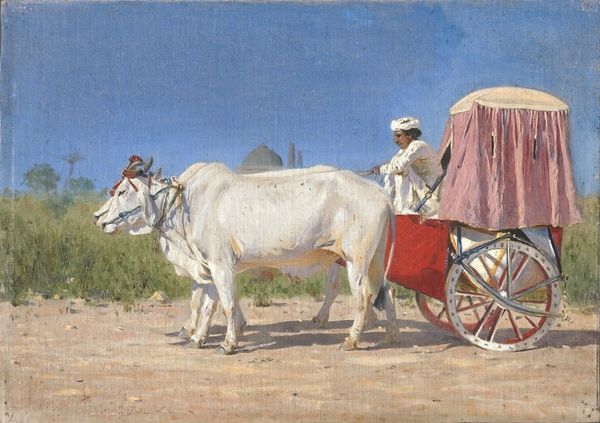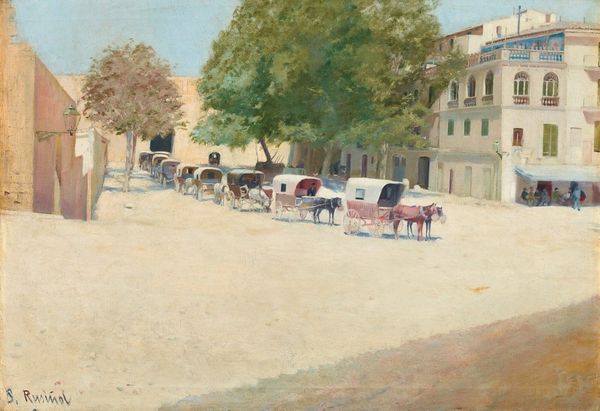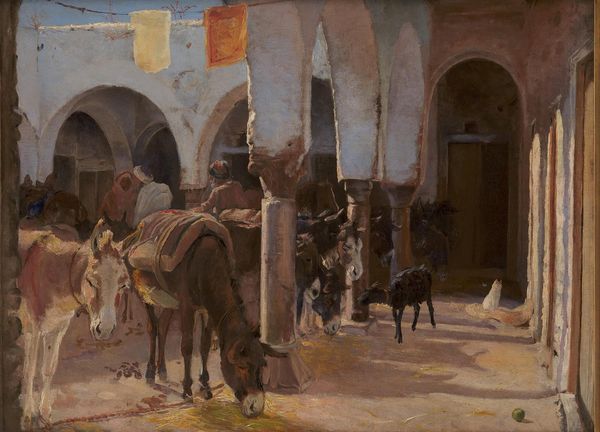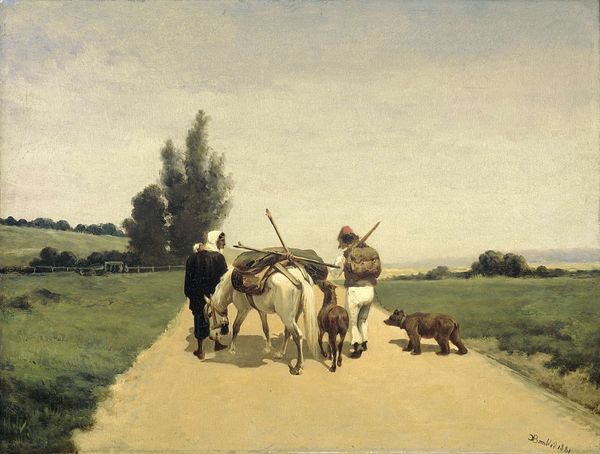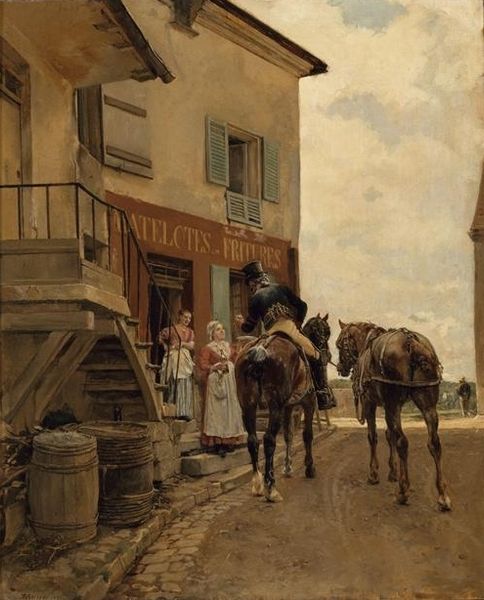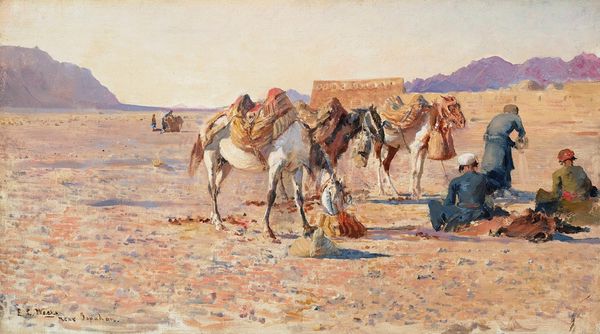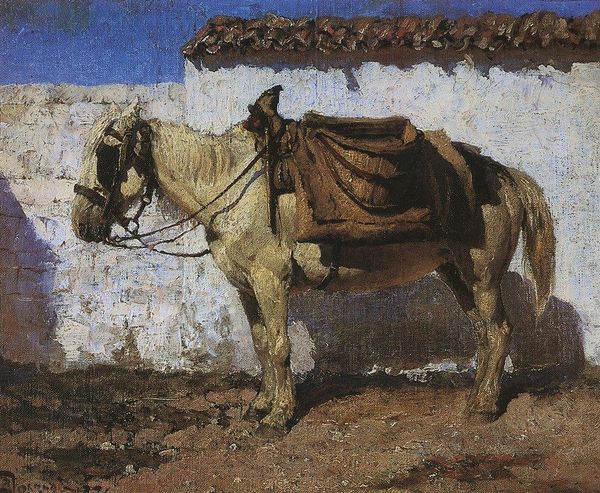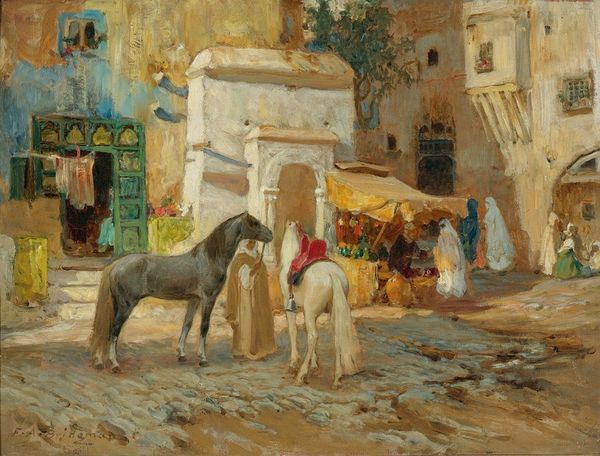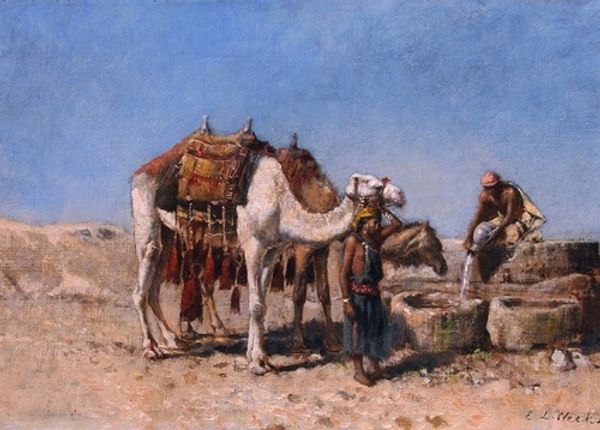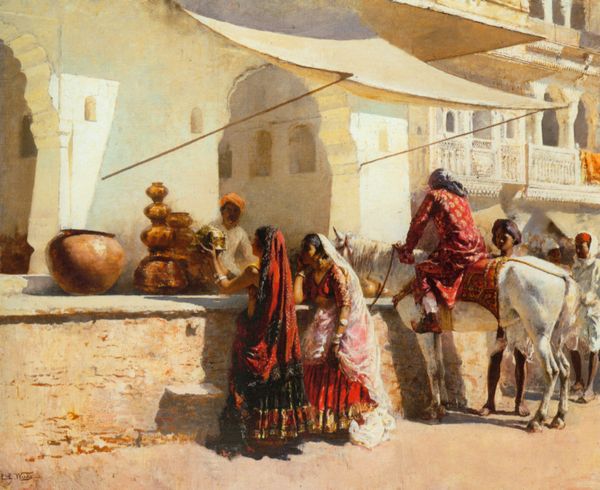
oil-paint
#
gouache
#
impressionism
#
oil-paint
#
landscape
#
oil painting
#
horse
#
genre-painting
Dimensions: 27 x 56 cm
Copyright: Public domain
Curator: Telemaco Signorini created this genre painting, titled "The White Wall," back in 1864 using oil paint, seemingly capturing a simple scene of daily life. What’s your initial impression? Editor: The overwhelming whiteness is… well, disarming! It's a powerful, almost blinding backdrop. You see the figures – the horses, the cart, and the man – but they feel secondary to that expansive, sun-drenched wall. It's minimalist, and starkly so, despite all the activity going on. Curator: It's true, Signorini really emphasizes the sun-baked stillness through that luminous barrier. You have the animals and the person working. We tend to think of horses carrying heavy burdens as representing labor and resilience but there's something else. The wall itself becomes a sort of silent observer of daily toil, a witness across time. Editor: Absolutely! And the composition leads the eye. That almost centered opening pulls me into… where? An interior space, a collective pen, a promise of continuation. The symbolism creates a longing, don't you think? As viewers we complete the rest of that trip and can consider that cart full of… food? Supplies? – headed back to that space where life exists, in community. And a wall protecting what's inside. Curator: The visual language Signorini employs is deeply evocative of daily rhythms in that period in Italian life. While the wall feels almost imposing, doesn't it also define the human-scaled drama of rural activity in contrast? Editor: Perhaps its message might center around boundaries, no? Defining what's in and what's out? A sort of physical representation of society itself and where each individual’s labor comes into play within it. Curator: Yes, the white wall reflects light but might as well symbolize restriction. Signorini prompts questions regarding what confines us—or perhaps what secures us. Editor: I'm so pleased to see it isn't *just* a white wall. There's an intentionality that is captivating and unnerving at the same time. Thanks for sharing the symbolism you perceived. It really brings "The White Wall" to life, or, more specifically, it unearths the quiet hum of Italian society in the 19th century. Curator: A landscape and genre piece, both reflective and timeless, no?
Comments
No comments
Be the first to comment and join the conversation on the ultimate creative platform.
